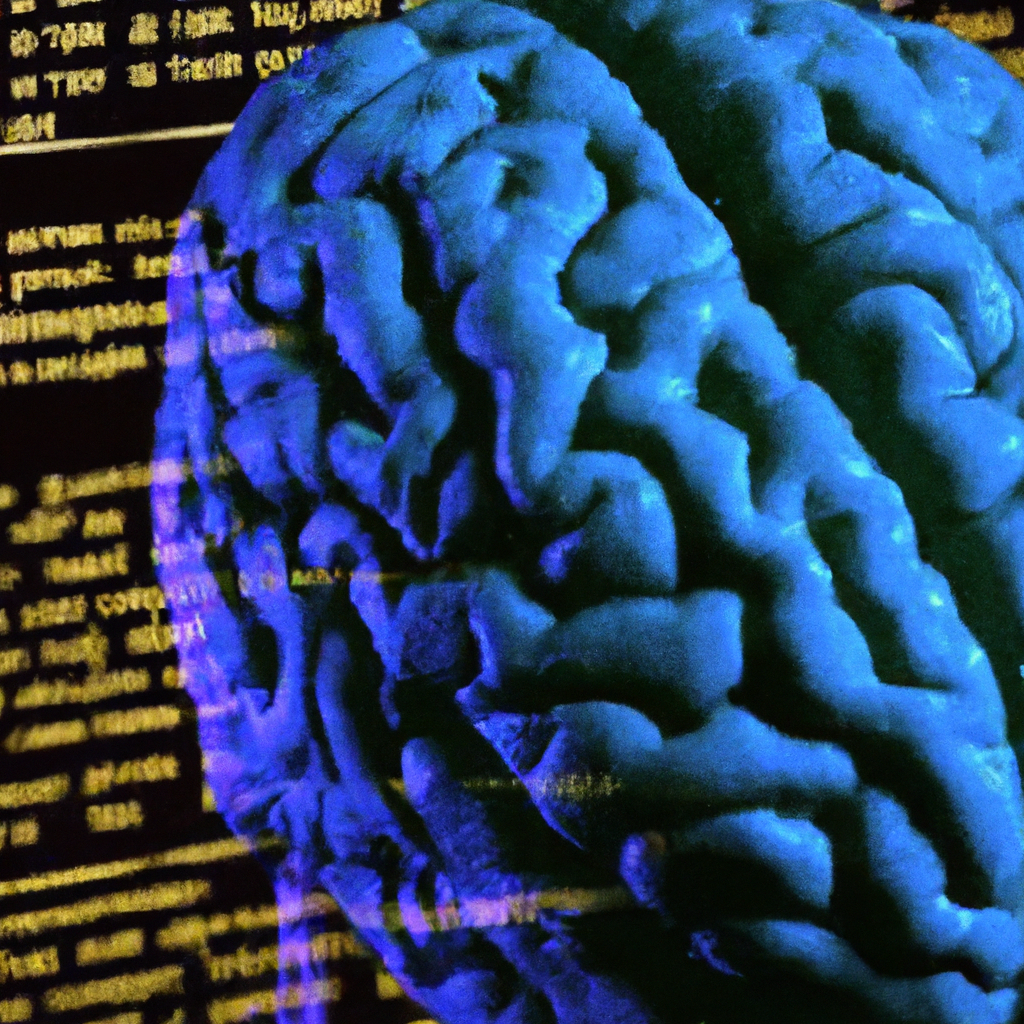Think about a world the place the facility to put in writing lies not in your palms, however in your thoughts. Via the development of brain-computer interfaces (BCIs), this seemingly far-fetched concept might quickly develop into a actuality. BCIs have the unbelievable potential to revolutionize the way in which we talk and specific ourselves via writing. By decoding the indicators in our brains, these interfaces can translate our ideas into written phrases, bypassing the necessity for cumbersome keyboards or pens. On this article, we’ll discover the thrilling prospects that BCIs supply for the way forward for writing and the way they might form the way in which we join, create, and convey our ideas.

Potential Purposes of Mind-Pc Interfaces in Writing
Enhancing Typing Pace and Accuracy
Mind-computer interfaces (BCIs) have the potential to revolutionize the way in which we kind by permitting us to instantly convert our ideas into written phrases. This might enormously improve typing pace and accuracy, as we might not must depend on the bodily act of typing or dictation. As a substitute, we might merely take into consideration the phrases we wish to write, and the BCI would translate these ideas into written textual content.
Enhancing Writing Effectivity
BCIs may enormously enhance writing effectivity by enabling us to bypass the cognitive processes concerned in conventional writing. With a BCI, we are able to bypass the necessity to type sentences in our minds, undergo the bodily means of typing or writing, after which edit and revise our work. As a substitute, we are able to streamline the writing course of by instantly translating our ideas into written textual content, leading to sooner and extra environment friendly writing.
Aiding with Author’s Block
Author’s block generally is a irritating and debilitating expertise for a lot of writers. BCIs supply the potential to help with author’s block by offering insights into the neural correlates of the situation and providing focused interventions. By analyzing mind exercise patterns related to author’s block, BCIs will help establish methods to beat it and stimulate creativity.
Facilitating Palms-Free Writing
For people with bodily disabilities or circumstances that restrict their skill to make use of their palms, BCIs generally is a game-changer. By permitting for hands-free writing, BCIs allow people to precise their ideas and concepts with out counting on conventional writing instruments. This may enormously improve accessibility and inclusivity for people who might in any other case battle to speak via written language.
Enabling Direct Thoughts-to-Textual content Transcription
Maybe probably the most revolutionary software of BCIs in writing is the flexibility to instantly transcribe ideas into written textual content. Which means that people not must depend on exterior instruments or bodily actions to precise their concepts. BCIs can instantly seize the neural exercise related to linguistic processing and translate it into written textual content, opening up new prospects for communication and expression.
Benefits of Mind-Pc Interfaces in Writing
Elevated Writing Pace
By bypassing the normal means of typing or handwriting, BCIs can considerably improve writing pace. With the flexibility to instantly convert ideas into written textual content, people can specific their concepts on the pace of thought, eliminating the necessity for bodily intermediaries. This may be notably helpful for duties that require fast and correct written responses, comparable to transcription or reside captioning.
Decreased Bodily Effort
Conventional writing strategies require bodily engagement, notably by way of tremendous motor abilities. BCIs remove the necessity for bodily effort by instantly capturing neural exercise and translating it into written textual content. This generally is a main benefit for people with circumstances that restrict their motor skills or those that expertise bodily fatigue whereas writing, permitting them to focus solely on their ideas.
Improved Accessibility and Inclusivity
BCIs have the potential to enormously improve accessibility and inclusivity within the discipline of writing. By enabling people with bodily disabilities to speak via written language, BCIs can break down obstacles and empower those that might have beforehand struggled to precise themselves. Moreover, BCIs can present people who’re nonverbal or have limitations in speech with an alternate technique of communication, opening up new avenues for self-expression.
Enhanced Focus and Focus
BCIs have the flexibility to boost focus and focus by decreasing exterior distractions. With the direct mind-to-text transcription, people can focus solely on their ideas, with out the necessity to shift consideration to bodily writing instruments or exterior environments. This may result in elevated productiveness and improved writing high quality by permitting writers to take care of a state of movement and elevated cognitive engagement.
Improved Writing High quality
BCIs may contribute to improved writing high quality. By permitting for real-time suggestions and evaluation of neural exercise patterns, BCIs can present writers with insights into their very own cognitive processes and potential areas for enchancment. Moreover, BCIs can supply options for enhancing writing, comparable to vocabulary choice or grammar correction, resulting in extra polished and refined written work.
Challenges and Limitations of Mind-Pc Interfaces in Writing
Complexity of Mind Indicators
One of many main challenges of utilizing BCIs in writing is the complexity of mind indicators. Whereas researchers have made important progress in decoding sure points of mind exercise associated to language processing, there’s nonetheless a lot to be taught. The intricacies of neural patterns related to writing might fluctuate enormously between people, making it difficult to develop common and correct BCI programs.
Particular person Variations
Particular person variations in mind construction and performance pose one other problem for BCIs in writing. Totally different people might have distinct neural patterns related to language processing, making it troublesome to create a one-size-fits-all method. Customization and calibration of BCI programs could also be essential to account for these variations and guarantee correct and dependable efficiency.
Coaching and Calibration Necessities
BCIs require in depth coaching and calibration to realize optimum efficiency. Customers must discover ways to generate particular mind indicators to carry out desired writing duties successfully. This coaching course of will be time-consuming and will require the help of educated professionals. Moreover, common recalibration could also be essential to accommodate adjustments in neural exercise or to enhance system accuracy.
Privateness and Moral Considerations
Using BCIs raises vital privateness and moral issues. BCIs instantly entry and interpret neural exercise, which is very private and delicate info. Safeguarding this information and making certain its privateness is of utmost significance. Moral issues additionally contain problems with knowledgeable consent, person autonomy, and potential unintended penalties of manipulating or interfering with neural processing.
Price and Accessibility
At the moment, BCIs are nonetheless comparatively costly and inaccessible for a lot of people. The price of buying and sustaining BCI programs, in addition to the necessity for specialised coaching and technical help, will be important obstacles to widespread adoption. Making certain affordability and accessibility of BCIs will probably be important for realizing their potential within the discipline of writing.
Mind-Pc Interfaces for Typing: Present State and Future Potentialities
Electroencephalography (EEG) Interfaces
EEG interfaces are among the many commonest non-invasive BCIs used for typing purposes. These interfaces measure {the electrical} exercise of the mind utilizing electrodes positioned on the scalp. Whereas EEG-based typing remains to be comparatively sluggish and fewer correct in comparison with conventional strategies, ongoing analysis goals to enhance the efficiency of EEG-based BCIs by growing extra superior electrode placement strategies, sign processing algorithms, and machine studying approaches.
Invasive Mind Implants
Invasive mind implants supply the best degree of precision and management for typing purposes. These implants are surgically positioned instantly into the mind, permitting for direct recording and stimulation of neural exercise. Though invasive implants have proven promising ends in analysis settings, their widespread use is proscribed because of the invasive nature of the process and related dangers.
Non-Invasive Neuroimaging Strategies
Non-invasive neuroimaging strategies, comparable to purposeful magnetic resonance imaging (fMRI) and purposeful near-infrared spectroscopy (fNIRS), have additionally been explored for typing with BCIs. These strategies measure adjustments in blood movement or oxygenation ranges within the mind as a proxy for neural exercise. Whereas non-invasive neuroimaging strategies supply glorious spatial decision, they typically have restricted temporal decision and will be costly and cumbersome to make use of.
Hybrid Approaches Combining A number of Modalities
To beat the restrictions of particular person BCIs, hybrid approaches that mix a number of modalities are being explored. By integrating completely different BCI applied sciences, comparable to EEG, fMRI, and eye-tracking, researchers purpose to boost the efficiency, accuracy, and usefulness of BCIs for typing. Hybrid approaches have the potential to leverage the strengths of every modality and supply a richer and extra dependable interface for mind-to-text transcription.

Enhancing Writing Effectivity with Mind-Pc Interfaces
Predictive Textual content Era
BCIs can improve writing effectivity by incorporating predictive textual content era algorithms. By analyzing the continuing neural exercise, BCIs can predict the phrases or phrases a author intends to kind, decreasing the necessity for full word-by-word transcription. This predictive textual content era characteristic can considerably pace up typing and make the writing course of extra fluid and intuitive.
Mind-Assisted Modifying and Proofreading
BCIs may help with enhancing and proofreading by analyzing neural patterns related to errors or inconsistencies in written textual content. By figuring out potential errors or areas of enchancment in real-time, BCIs can present rapid suggestions, permitting writers to rectify errors and improve the general high quality of their writing. This characteristic will be notably helpful for people who battle with self-editing or proofreading their work.
Semantic Evaluation for Content material Enhancement
BCIs outfitted with semantic evaluation algorithms can analyze neural patterns to know the author’s meant that means or message. By inspecting the neural exercise related to completely different phrases or ideas, BCIs can recommend different vocabulary decisions, present extra context, or supply insights into bettering the cohesiveness and readability of written content material. This semantic evaluation characteristic can enormously improve the general high quality and influence of writing.
Actual-Time Suggestions for Writers
BCIs can present real-time suggestions on numerous points of writing, comparable to grammar, fashion, or tone. By constantly monitoring neural patterns, BCIs can examine the continuing writing course of to predefined guidelines or fashions and supply rapid suggestions on areas that may be improved. This real-time suggestions loop will help writers refine their writing abilities and develop more practical and polished written work.
Easing Author’s Block utilizing Mind-Pc Interfaces
Understanding the Neural Correlates of Author’s Block
Author’s block is a phenomenon characterised by a brief lack of ability to supply new written work. BCIs supply the potential to uncover the underlying neural correlates of author’s block by analyzing mind exercise patterns throughout artistic writing duties. Understanding these neural correlates can present insights into the cognitive processes concerned in author’s block and assist develop focused interventions.
Mind Stimulation Strategies to Overcome Author’s Block
BCIs will also be used to beat author’s block by making use of mind stimulation strategies. By modulating neural exercise in particular mind areas or networks related to creativity and concept era, BCIs can probably alleviate the signs of author’s block and stimulate artistic considering. Transcranial magnetic stimulation (TMS) and transcranial direct present stimulation (tDCS) are among the many strategies which have proven promise on this regard.
Artistic Thought Era with Mind-Pc Interfaces
BCIs can facilitate artistic concept era by analyzing neural patterns related to ideation and inventive considering. By figuring out neural signatures of novel and modern concepts, BCIs can present real-time suggestions and options to writers, serving to them overcome artistic blocks and generate contemporary and imaginative content material. This may be notably helpful for people who depend on their artistic skills in fields comparable to literature, promoting, or content material creation.

Facilitating Palms-Free Writing with Mind-Pc Interfaces
Gaze-Based mostly Textual content Choice and Composition
BCIs can facilitate hands-free writing by using eye-tracking know-how for textual content choice and composition. By monitoring the author’s eye actions, BCIs can interpret gaze patterns and map them to particular phrases or instructions, permitting for environment friendly textual content choice with out the necessity for bodily interactions. This know-how can enormously profit people with bodily disabilities or restricted hand dexterity.
Voice Command Activation and Management
Voice command activation and management are one other manner BCIs can facilitate hands-free writing. By integrating voice recognition know-how with BCIs, writers can merely vocalize their ideas or instructions, and the BCI system can translate them into written textual content. This characteristic not solely supplies a hands-free different for writing but in addition provides a extra pure and intuitive interplay methodology for a lot of people.
Mind Indicators for Controlling Writing Instruments
BCIs have the potential to instantly management digital writing instruments based mostly on neural indicators. By decoding particular mind exercise patterns related to completely different writing actions, comparable to typing, deleting, or formatting, BCIs can allow writers to govern textual content and formatting components with none bodily enter. This characteristic can improve writing effectivity and comfort, particularly in eventualities the place exact management over writing instruments is required.
Thoughts-to-Textual content Transcription: Present Progress and Future Prospects
Decoding Mind Indicators for Textual content Era
Decoding mind indicators for textual content era is a difficult job that researchers have been actively engaged on. By analyzing neural exercise patterns related to language processing and linguistic representations, BCIs can decode these patterns and translate them into written textual content. Whereas progress has been made on this space, additional developments are wanted to enhance the accuracy, pace, and flexibility of mind-to-text transcription.
Actual-Time Textual content Output and Communication
Actual-time textual content output and communication are important for the sensible use of BCIs in writing. BCIs want to supply textual content output in real-time to be really helpful for writing duties. Ongoing analysis goals to develop sooner and extra environment friendly algorithms for real-time textual content era and transmission, permitting for seamless communication via mind-to-text transcription.
Mind-Pc Interfaces for People with Motor Disabilities
BCIs have the potential to be transformative for people with motor disabilities, enabling them to speak and specific themselves via writing. By bypassing the necessity for bodily actions or tremendous motor abilities, BCIs supply a direct and accessible pathway for people with restricted mobility to interact in written communication. This development can considerably enhance their high quality of life and facilitate their integration into society.

Moral Concerns of Mind-Pc Interfaces in Writing
Privateness and Safety of Mind Knowledge
Using BCIs raises vital considerations concerning the privateness and safety of mind information. BCIs instantly entry and interpret neural exercise, which is very private and delicate info. Safeguarding this information from unauthorized entry, breaches, or misuse is essential. The event of strong information safety and encryption strategies will probably be important to make sure the privateness and safety of mind information.
Making certain Knowledgeable Consent and Consumer Autonomy
Acquiring knowledgeable consent from BCI customers is of utmost significance to make sure their autonomy and decision-making. People utilizing BCIs for writing ought to have a transparent understanding of the dangers, limitations, and potential advantages of the know-how. They need to even have the suitable to opt-in or opt-out of any information assortment or sharing processes related to BCIs.
Addressing Potential Discrimination and Bias
BCIs have the potential to inadvertently perpetuate discrimination or bias if not correctly addressed. The event and deployment of BCIs ought to prioritize equity, inclusivity, and the avoidance of bias of their algorithms and fashions. Efforts must be made to make sure that BCIs are designed to accommodate numerous customers and don’t discriminate based mostly on elements comparable to race, gender, or incapacity.
The Way forward for Writing: Mind-Pc Interfaces as Writing Assistants
Writing in Digital and Augmented Actuality Environments
BCIs can improve the writing expertise by permitting writers to immerse themselves in digital or augmented actuality environments. By leveraging BCIs along side immersive applied sciences, writers can work together with their written work in three-dimensional areas, visualize ideas or scenes, and manipulate textual content components in a extra partaking and interactive method.
Collective Brainstorming and Collaborative Writing
BCIs supply the potential for collective brainstorming and collaborative writing experiences. By connecting a number of BCIs, people can share their ideas and concepts instantly, bypassing the necessity for verbal or written communication. This may facilitate environment friendly and dynamic collaborations, permitting for the simultaneous integration of a number of views and enhancing the artistic potential of writing.
Increasing Creativity and Creativeness with Mind Indicators
BCIs have the potential to increase creativity and creativeness by tapping into the intricacies of neural exercise related to these cognitive processes. By analyzing mind indicators and figuring out neural signatures of creativity and imaginative considering, BCIs can supply focused interventions and suggestions to boost these skills. This may unlock new realms of creativity and allow people to push the boundaries of their writing capabilities.
In conclusion, brain-computer interfaces maintain nice promise for the way forward for writing. They’ve the potential to boost typing pace and accuracy, enhance writing effectivity, help with author’s block, facilitate hands-free writing, and allow direct mind-to-text transcription. The benefits of BCIs in writing embody elevated writing pace, decreased bodily effort, improved accessibility and inclusivity, enhanced focus and focus, and improved writing high quality. Nevertheless, there are challenges and limitations that have to be addressed, such because the complexity of mind indicators, particular person variations, coaching and calibration necessities, privateness and moral considerations, and value and accessibility. The present state and future prospects of BCIs for typing embody numerous applied sciences comparable to electroencephalography (EEG) interfaces, invasive mind implants, non-invasive neuroimaging strategies, and hybrid approaches combining a number of modalities. BCIs may enhance writing effectivity via predictive textual content era, brain-assisted enhancing and proofreading, semantic evaluation for content material enhancement, and real-time suggestions for writers. They will help overcome author’s block by understanding the neural correlates of author’s block, using mind stimulation strategies, and selling artistic concept era. Facilitating hands-free writing with BCIs will be achieved via gaze-based textual content choice and composition, voice command activation and management, and mind indicators for controlling writing instruments. The progress and future prospects of mind-to-text transcription contain decoding mind indicators for textual content era, real-time textual content output and communication, and the potential advantages for people with motor disabilities. Moral issues, comparable to privateness and safety of mind information, making certain knowledgeable consent and person autonomy, and addressing potential discrimination and bias, should be fastidiously addressed. Lastly, the way forward for writing lies within the potential of BCIs as writing assistants, with purposes in digital and augmented actuality environments, collective brainstorming and collaborative writing, and increasing creativity and creativeness with mind indicators. With ongoing analysis and improvement, brain-computer interfaces have the potential to revolutionize the way in which we write and talk, opening up new prospects for creativity and expression.


